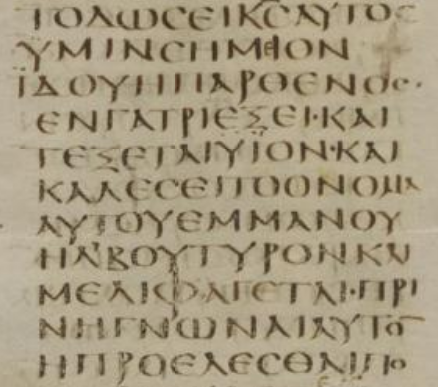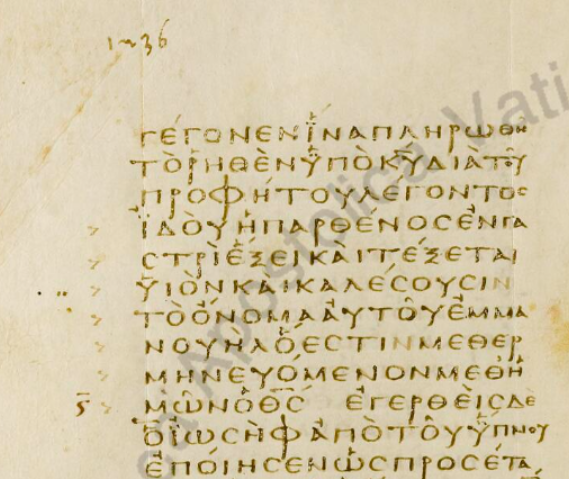17 January 2022
Order in chaos
But the path of the just is as the shining light,
that shineth more and more unto the perfect day.
— King Solomon (Proverbs 4:18)
that shineth more and more unto the perfect day.
— King Solomon (Proverbs 4:18)
Have you ever started reading the number one bestseller of the world?
I mean here the Bible, which, according to several sources (see
this, for example)
has been sold in more than 5 billion copies in the world.
And did you find
some order in that book?
Some parts of it – for example, the Gospels –
are quite simple to read: they communicate a very clear message,
but at the same time they deliver a deep knowledge.
The Bible is a collection of several books. The first part, the Old Testament, is
a canonical collection of Hebrew scriptures, but the second part (the New Testament) was
written by Christians, followers of Jesus.
Christians claim that Jesus was the promised Messiah sent by God.
In fact, a great part of the New Testament seem to prove this doctrine, by
using many ways: mostly by telling stories about Jesus from his supernatural birth through his life
until his death (and his resurrection!), and the supernatural deeds of his mortal followers.
An important method of verificating Jesus' identity is to quote texts from the Old Testament and explain that they have
a direct connection with the happenings in the New Testament including doctrinal questions too.
All this means that quotations play an important role in the New Testament. The Jewish culture
and theology also rely on quoting the Old Testament and explaining it. As a result, the text of the Old Testament
is handled very carefully by Christians and Jews. At the end of the day, it is considered as God's revelation,
and therefore perfect and complete.
In the following blog entries, I am going to demonstrate how the connection between the Old and New Testament can be
explained by quotations appearing in the New Testament, by using mechanical tools. I consider it
important to use mechanical methods to avoid personal preconceptions as much as possible.
In fact, comparison of two texts is much simpler if they are in the same language. In our case,
the Old Testament is written in Hebrew, but the New Testament was written in Greek. The oldest manuscript
of the Hebrew Old Testament is the Leningrad Codex, dated back to 1008 CE.
For the New Testament, the oldest manuscripts are the Codex Vaticanus
and the Codex Sinaiticus, both of them can be traced back to the 4th century.
Both of these old manuscripts contain a Greek translation of the Old Testament; however, some parts of
the texts are lost. Being familiar with later manuscripts we can have a guess how the original texts looked like.
The translation process from Hebrew into Greek began in the 3rd and finished in the 2nd
century BCE. It was initiated by King Ptolemy the Great, and the result was
called Septuagint. In the ancient world, more
than a hundred years before the arrival of Jesus, it was already possible to read the Old Testament
in lingua franca, the common language:
Greek. In the New Testament we also read about a kind
of internationalization process of the Jewish theology, by moving the focus from the Jews to other nations.
We use a digital tool embedded in this web page that is able to compare Greek texts:
the Greek translation of the Hebrew original of the Old Testament to the Greek text of the New Testament.
Some readers who have roots in the Jewish tradition may disagree and say that this is not a good idea:
the original Hebrew text should be read in Hebrew, right? There are actually some slight differences
between the original text and the translation. Also, some parts cannot even be translated perfectly
(see, for example, Psalm 119 which is an
acrostic poem). But, in fact, there are important arguments for using
the Greek translation of the Hebrew text in a research project:
- The Greek translation was widely used in the ancient times, even in the New Testament there is ample evidence of this.
- Important people who had Jewish roots like the Apostle Paul preferred using the Greek text in many situations instead of the original Hebrew.
- The internationalization process is mentioned several times in the New Testament, predicting the fall of Jerusalem in 70 CE.
Let us have a look at the digital tool this web page provides! There is a command line interface to
bibref below that allows the user to use a digitalized
version of the Septuagint (called LXX), and the Greek New Testament (called SBLGNT).
Our research question is the following: Did the authors of the New Testament quote
the texts from the Old Testament accurately? This is a very substantial fundamental question if we want to take the Bible
seriously. I would like to answer this question unbiased, by using mechanical methods as much as possible.
To get a first impression I have already prepared a command line for you: just click in the pink input box and press ENTER to have a try.
First, we will get a verse of the English Bible (KJV),
from the Book of Isaiah, to approach the topic a bit. This is, of course, written in English,
so we may want to see the Greek text instead, to get a closer look.
Please try the command lookup LXX Isaiah 7:14
either by editing the input by hand and pressing ENTER again, or by using copy-paste. Do not worry if you don't speak Greek:
we will be working with the texts just mechanically.
Let us try to fetch a quotation of this verse from the New Testament:
please type (or copy-paste) lookup SBLGNT Matthew 1:23.
You can confirm that some matches should indeed appear in the two texts. By issuing
lookup KJV Matthew 1:23 you can read the English
translation as well.
Now we will compare these two Greek texts. The English translation suggests that we may want to skip
the introductory part of Isaiah and the ending part of Matthew. We can store the relevant part of Isaiah by using
the command
text1 ιδου η παρθενος εν γαστρι εξει και τεξεται υιον και καλεσεις το ονομα αυτου εμμανουηλ.
This will put the text on clipboard 1.
On the other hand, to store the second text on clipboard 2 you need to type
text2 Ιδου η παρθενος εν γαστρι εξει και τεξεται υιον, και καλεσουσιν το ονομα αυτου Εμμανουηλ.
To compare them mechanically you have two options. You can either use the Jaccard
distance for the two texts by
issuing the command jaccard12 or use an optional comparison with the command compare12.
Both will give
you a number near 0.08 – this simply means that these two texts substantially match, since they differ in 8%.
More on mechanization
Of course, one needs to know these two relevant parts of the Bible in advance, to verify the
assumption that these texts match. If one knows only the first text from LXX, there is already a tool
that helps find the matching part from SBLGNT. This is how it works: one needs to type
getrefs SBLGNT LXX Isaiah 7:14.
By pressing ENTER, your browser may process for a couple of seconds – here the whole Bible must be checked,
so be patient.
The result is somewhat more complicated. The program gives line by line which texts from the New
Testament have a partial but literal match with the text from Isaiah. Some lines may be just accidental,
but the last ones are often correct matches. Here we mention two of them:
- LXX Isaiah 7:14+85 7:14 = SBLGNT Matthew 1:23+52 1:23-34 (length=21, pos1=14284, pos2=1974)
- LXX Isaiah 7:14+35 7:14-24 = SBLGNT Matthew 1:23 1:23-60 (length=47, pos1=14234, pos2=1922)
Another option to perform a mechanical check is to put the two long texts in the clipboards by
explicitly defining their starts and ends. This is how it works:
lookup1 LXX Isaiah 7:14+35 7:14 and
lookup2 SBLGNT Matthew 1:23 1:23-34.
Finally, the command
jaccard12 will compute the Jaccard distance
for the two texts in the clipboards.
How the texts are stored
You may have learned that the program internally converts Greek characters into Latin letters:
this aims at helping researchers who are unfamiliar with the Greek language. Also,
spaces, commas, periods and capitalized letters are completely ignored.
This is intentional: the manuscripts from the 4th century CE do not have any punctuations. Here are
two examples, taken from the freely available databases for the Codex
Vaticanus and the Codex Sinaiticus.
In fact, chapters and verses for the Bible were introduced in the 13rd century (by Stephen Langton)
and widely accepted just in the 16th century.

This first picture is a snapshot from Codex Sinaiticus, in the passage near Isaiah 7:14.
The second picture below is from Codex Vaticanus, in the passage near Matthew 1:23 (on page 1236,
if you want to search for it on your own).

Can you find the word Immanuel in both texts?
Acknowledgment. My friend László Gyöngyösi kindly helped me improve the first version
of this blog entry.
Continue reading…
- 12 January 2022—Web version of bibref
- 2 November 2021—Supporting logic in function calculus
- 28 October 2021—Proving inequalities
- 27 October 2021—Discovering geometric inequalities
- 1 October 2021—Web version of Tarski
- 9 July 2021—Embedding realgeom in GeoGebra
- 26 January 2021—ApplyMap
- 25 January 2021—Comparison improvements
- 29 December 2020—Pete-Dőtsch theorem
- 18 November 2020—Ellipsograph of Archimedes as a simple LEGO construction
- 17 November 2020—Offsets of a trifolium
- 11 November 2020—Explore envelopes easily!
- 31 October 2020—Points attached to an algebraic curve…
- 19 October 2020—Detection of perpendicular lines…
- 6 October 2020—Better language support…
- 29 September 2020—A new GeoGebra version with better angle bisectors…
- 28 September 2020—I restart my blog…
- …newest entry (as of 24 December 2025)

|
Zoltán Kovács Linz School of Education Johannes Kepler University Altenberger Strasse 69 A-4040 Linz |